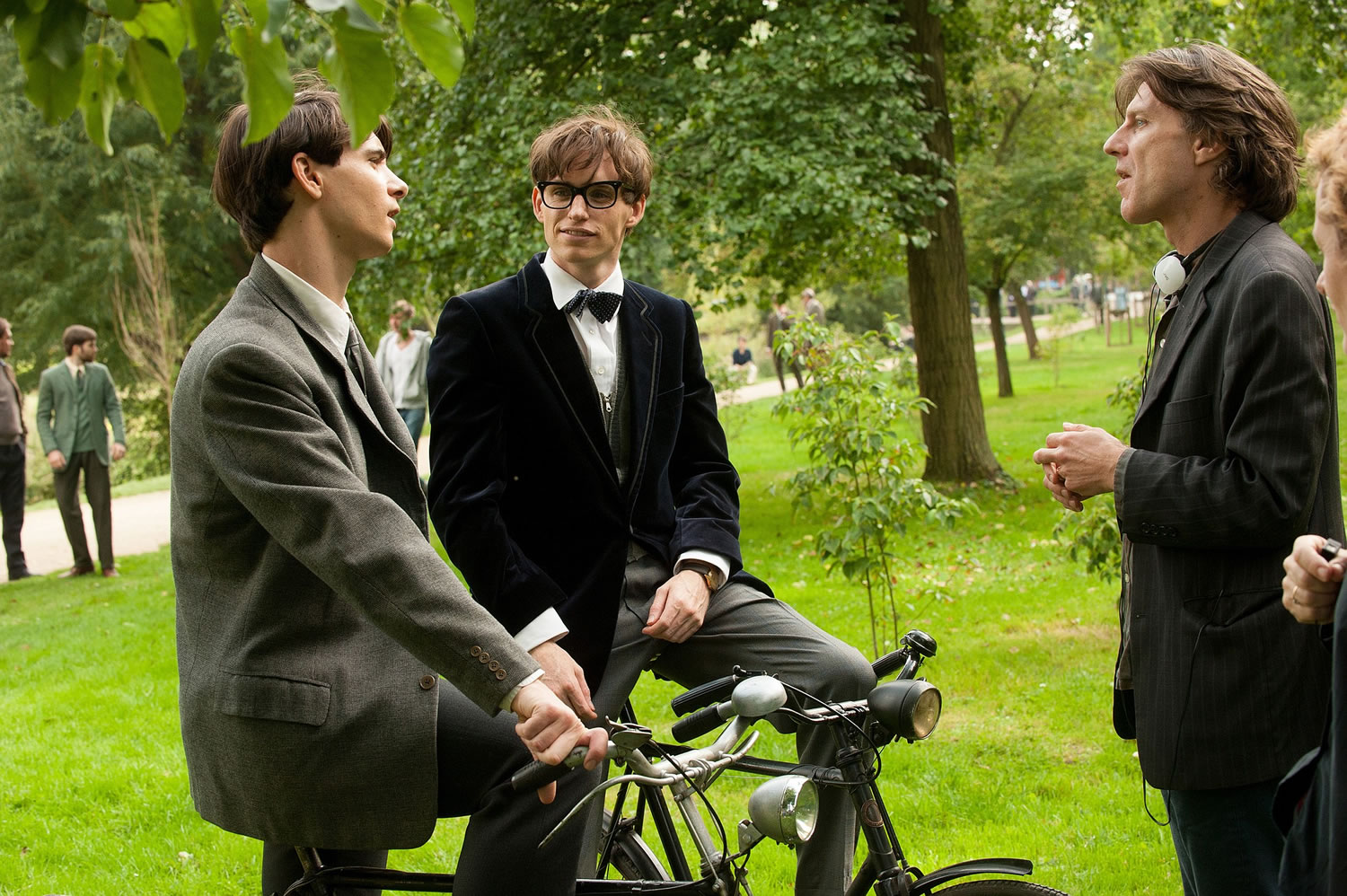NEW YORK — Actors can engage in plenty of odd pre-performance rituals. But when it comes to moments you’d rather strangers not see, few compare to hanging out in a London park mimicking Stephen Hawking.
That was life for Eddie Redmayne in the months before he took on the scientist in the new biopic “The Theory of Everything.” Redmayne would practice Hawking’s physicality through the ages while a movement coach captured it all on camera. Then the actor would study the footage and go out and do it all over again.
“It was a little like shooting a love scene,” Redmayne said over lunch at the Waldorf Astoria recently. “You knew it was good for the movie, but there was also a bit of ‘can we get out of here?’ “
Redmayne makes the audience want to stay firmly in their seats through the James Marsh-directed “Theory,” which focuses on the relationship between Hawking and ex-wife Jane (Felicity Jones), based on the second and more gentle of two memoirs she wrote about their marriage. The film opened Nov. 14 in limited release to generally glowing reviews, especially for Redmayne and Jones, with considerable Oscar buzz around both performances.
Redmayne plays Hawking with an air of both swagger and wry humor — and a distinct absence of self-pity — while also capturing the subtle but devastating encroachments of Hawking’s rare motor-neuron disease.
It’s a part that evokes the extreme physicality of Daniel Day-Lewis in “My Left Foot” and attracted a slew of attention for the 32-year-old British stage veteran — while reigniting the, well, theory that British actors are just better than the rest of us at period drama. After all, Redmayne is the latest in a series of performers from across the pond to play complicated historical figures using an almost Method-level of research, including Benedict Cumberbatch as Alan Turing in the upcoming “The Imitation Game” and Colin Firth as George VI in the 2011 Oscar winner “The King’s Speech.”
“There’s this sort of cliche that a British actor likes to put on the clothes and then begins to find the character, and an American actor looks inside first,” Marsh said when asked about the phenomenon. “Both can be brilliant, but they’re very different processes.”
To play Hawking, Redmayne studied nuances like the difference between upper and lower neurons, trying to break down the role to a granular degree — at some point in Hawking’s degeneration, for example, the upper arm might be spastic while the lower half was rigid, and Redmayne wanted to capture that, an effort that required an unusually intense kind of mental split.
“When a scene ended you’d hear this exhalation and realize just how much energy Eddie was consuming while barely moving,” Jones recalled.
Since Hawking’s condition was degenerative, Redmayne also needed to study the entire life of the septuagenarian scientist. In the years since the 1980s, video footage of Hawking was abundant, but the several decades before allowed only the occasional photograph. Redmayne consulted medical textbooks and talked to nurses who worked with Hawking to reconstruct how his condition evolved over the years. He would then break it down with the movement coach, Alex Reynolds, who also taught the zombies how to walk on “World War Z.”
If all that wasn’t challenging enough, “Theory” was, like most movies, shot out of sequence. That meant Redmayne could be skipping ahead to a latter-life level of degeneration in the morning, then winding the clock back to an early-disease moment in the afternoon. It grew so complicated that the actor kept a chart on set tracking where the film was relative to Hawking’s real-life condition; each point on the timeline would contain the movements he could and couldn’t do, and he would often consult it before jumping into a scene.
“I remember thinking when I started this, ‘well, this is going to be interesting.’ And it was.” He paused. “Everything would affect everything else.”
In person, Redmayne emanates a kind of newbie charm, but he is in fact a seasoned player on the theater circuit — he won Olivier and Tony awards for his supporting part in the art-world play “Red” and has done Richard II in London — but has had a less prominent film career; his best-known role was as Marius in “Les Miserables” two years ago.
When he arrived in Los Angeles several years ago on his first extended trip to Hollywood, he stayed at his agent’s house, where he remembers coming to the breakfast table and finding himself baffled by the words in the trades.
Good-natured with an outgoing streak, Redmayne seems to be hovering between the less Hollywood world he comes from (he attended Cambridge, where he would sometimes see Hawking at a distance, and in a few months will get married to a nonactress, Hannah Bashawe) and the more slick one he has sometimes dipped into. When describing something in the film world, he noted the “marketplace,” then caught himself. “Marketplace, it sounds like I’m this tycoon talking about a commodity.”
He also worried that his Hawking performance could go too far. “It’s this very complicated challenge, where you want to get all the movement right, but you’re always thinking you don’t want to go too far and be rude to Steven. It makes for a lot of trial and error.”



